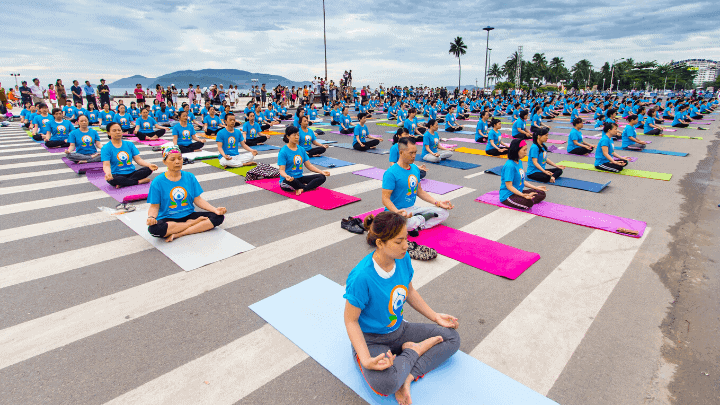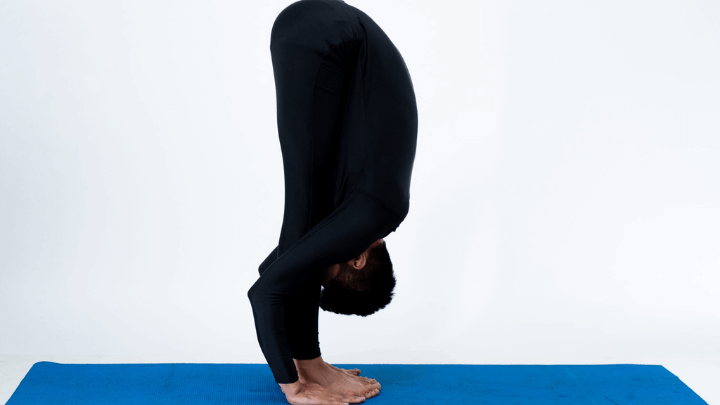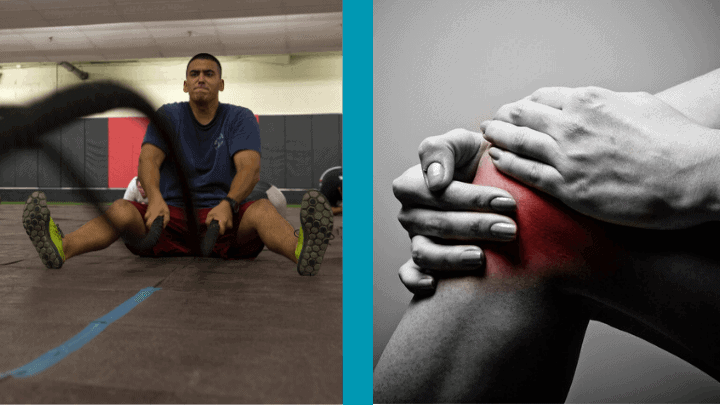Jump links to your area of interest:
- The Anatomy Of Strength
- ATP-CP System
- Glycolytic System
- Types Of Muscle Growth
- How To Improve Weak Squats
- Importance Of Strong Glutes
- Explosiveness For Weak Squats
- Conclusion
One of the most common problems for a big number of trainees is having weak squats and a strong deadlift.
This might be the result of insufficient or incorrect training, which is something you can always work on and improve if you have weak squats!
It also needs to be understood that any end result you may desire is nothing but an adaptation.
Now, that may sound simple, but when the body is adapting to certain conditions of the environment, there are quite a few components that undergo changes.
Before we get into the actionable information that will help you boost your squat, allow us to talk you through some theory.
The Anatomy Of Strength

Alright, if you are already into training, you know how it goes.
You lift progressively heavier weights and your muscles grow bigger and stronger.
But how exactly can we create a constructive stimulus for our goal of choice?
Well, it all starts at the parameters of a workout.
Note that what you are about to read can be applied for ANY muscle group and exercise to help you get bigger and stronger.
Workout Variables
Whether you like math or not, there is certain mathematics expressed in each and every one of your workouts.
Think about it, weights, sets and repetitions, that is all numbers!
Depending on the ratios of these numbers and the variables of a workout, you will trigger different components of your body to get the work done.
Now, the 3 main parameters of a weightlifting workout are the following:
- Intensity
- Volume
- Density
1. Intensity

Intensity by definition is a parameter of the workload, that expresses how close you get to your maximum strength capabilities (one-rep max), on a given exercise.
This parameter increases or decreases, the closer or further you get to and from your one-rep max on a given exercise
With simple words, the heavier you lift, the higher the intensity, with your one-rep max, being 100% intensity on a given exercise.
Now, we are saying this from a sports theory point of view. This is the textbook definition of intensity in training.
You see, some people run a 10-mile jog and go on to say “Woah, that was intense!”.
And while that might be their definition of intensity, a 10-mile jog is not intense by any means.
It is rather a low-intensity, long in duration activity.
2. Volume

Volume on the other hand, expresses the total amount of weight lifted for a given exercise, set or a workout.
This parameter can be measured with the following formula:
Volume = Weight * Sets * Repetitions
And so, a set of 10 repetitions on the exercise “Flat barbell bench press”, done with 70 kilograms, would yield a volume of 700 kilograms.
3. Density

Density is the third and final parameter of the workload, which expresses the volume of a workout, relative to the total completion time, including rests.
And so, if you complete 3 sets on the bench with the same weight (70 kg) for 3 minutes, that would be a volume of 2100 kilograms and a density of 700 kilograms/minute.
Density = Volume : Total completion time
Why You NEED this
We know, it may be too much science at this point.
All you want is to know how to get stronger on the squats!
Well, rest assured that this structured knowledge may help you not only get stronger on squats, but every other exercise.
And so, let’s dig into a bit more of this information and understand muscle growth and strength gains in-depth
Now, first off, the ratios of the parameters we talked about above, will trigger different components of the organism.
Let’s start at the energy systems that the body uses to grant energy for physical activity.
The ATP-CP System
Adenosine triphosphate (ATP) is the body’s primary source of fuel and is the purest form of biological energy.
It is used for each and every process and movement of the body, including the movement of your finger as you scroll down this page.
However, during intense activity, ATP gets depleted quickly, due to its limited storages (depleted in ~5 seconds of intense activity).
After the 5th second, ATP turns into Adenosine diphosphate (ADP).
At this point, the body needs to restore energy, in order to continue muscle contraction.
To do so, the body joins ADP with Creatine phosphate (CP) to restore ATP and hence, grant energy for continued activity, for another ~10 seconds.
The ATP-CP (immediate) energy system, utilises ATP and Creatine reserves to grant energy. This system is used during intense movements, lasting ~10-15 seconds (think a 50 meter sprint for example).
The Glycolytic System
Alright, so you just learned that Creatine is not just found in supplements.
It is, so to speak, the body’s secondary energy storage. However, that storage is relatively limited.
So what happens when both ATP and CP are depleted?
Well, the body starts relying on “Glucose” and its stored form “Glycogen”.
Through a process called “Glycolysis”, the body gets glycogen into the energy cycle and regenerates ATP.
The glycolytic system is used for moderate to high intensity bouts, in the 20~90 second range. Think a 200-400 meter sprint.
Firstly, this is “Anaerobic glycolysis”, which is the breakdown of glycogen, without the use of oxygen.
The more prolonged the activity, the more training intensity naturally drops and the body moves into its third energy mode.
That is the “Aerobic” mode, which grants ATP through “Aerobic glycolysis”, with the use of oxygen.
Furthermore, the aerobic energy system also uses fatty acids and protein, if the first two (glycogen and fatty acids) are not available.
Check out this study to learn more about the energy systems of the body.
Types Of Muscle Growth
If you’ve been training for a while, you know that the body adapts to new, previously unknown physical stress from training, by building muscle tissue.
But is all growth the same and how do the parameters of the workload affect that?
Let’s have a look at the two types of muscle growth.
Myofibrillar Hypertrophy
The active, contractile elements of your muscles are called “Myofibrils” or with simple words, “Muscle fibres”.
Myofibril hypertrophy is essentially the growth of the muscle fibres.
With this type of growth, the main adaptations are expressed as an increase in the size of the fibres and also, the levels of strength.
This is also known as “Functional growth”, as it does not cause you to gain too much muscle, but just what you need to sustain a given load.
The myofibril hypertrophy is the most sought-after type of growth by people who do powerlifting, Olympic weightlifting and strength athletes in general.
Myofibril hypertrophy is the growth of the muscle fibers, which leads to increases in relative and maximum strength. This type of growth is stimulated in the ~5 rep range.
Sarcoplasmic Hypertrophy
On the other hand, we have “sarcoplasmic hypertrophy”.
The “Sarcoplasm” is the jelly-like fluid that surrounds the myofibrils.
That exact fluid is where “glycogen” and other non-contractile elements are found.
Well then, if you work with the “glycolytic energy system” range and do heavy, but more prolonged sets, then the body may want to increase the storages of glycogen, in order to support those longer sets.
That is exactly what “sarcoplasmic hypertrophy” is.
This type of hypertrophy is mostly sought-after by bodybuilders and physique athletes, who are looking for maximum visual development, but also CrossFit trainees who need strength endurance.
Sarcoplasmic hypertrophy is the growth of the jelly-like fluid surrounding the muscle fibers. This growth primarily results in bulk-muscle growth and increased levels of strength endurance.
How To Improve Weak Squats – The Back Squat

Alright, so far, so good.
You now know a bit more about how the body handles the loads which you go through while working out.
Did you know that the back squat is good not only for the legs, but also for the lower back and the core muscles, if done correctly. The spinal erectors, which are a part of the posterior chain, help us maintain a straight posture throughout the movement pattern and furthermore, you can add the “Good morning” exercise to develop a stronger lower back.
Now let’s see how you can apply this knowledge to massively improve your squat, to the back squat variation, where the barbell is placed on the upper back.
Getting stronger
In order to get stronger on any given exercise, you have to create a stimulus for myofibril hypertrophy during your strength training workouts.
That is, as you already learned, training in the range of 5-15 seconds per set, or in other words, the ~5 rep range.
We would recommend first doing a proper warm-up, followed by two bodyweight squat sets of 12-15 repetitions, to get the blood flowing.
Then, take a certain weight and start your working sets.
The goal here is to lift a challenging weight and work your way up to 5 sets of 5 repetitions with that weight.
Once you get 5×5, increase the weight 3-5% and do the same thing.
Note that the ~5 rep range puts you in the 85%+ intensity zone, which is more strenuous on the central nervous system. To perform optimally from set to set, you need to take 2-5 minutes of rest in-between each set.
Gaining Strength Endurance

You might be wondering which type of hypertrophy you should choose.
Well, the fact of the matter is that unless you are a competitive powerlifter, you can have a balance of both.
So, that means, training in the ~5 rep range, but also the 6+ rep range.
As we learned, the 6+ rep range will utilise glycogen from the muscles and hence, lead to sarcoplasmic hypertrophy.
You can apply a similar scheme to the one from above to get better on the higher rep ranges.
- Warm up well, do 1-2 lightweight warm-up sets
- Take a challenging weight
- Complete 4 sets of as many reps as you can, but also leaving 1-2 reps in the tank (not training to failure)
- Work your way up to 32+ total repetitions for these 4 sets
- Once you can do at least 33 repetitions in 4 sets with that weight, increase the weight 3-5% and do the same
Note that the heavier you train, the more you strain the central nervous system. This is why it is always good to alternate between heavy, moderately heavy and even lighter training days. Furthermore, if you have problems with your knees, a front squat variation whilst avoiding full depth, would be better. A good option here, if you don’t have a good squat technique yet, is the exercise “box squat”.
Check out our full article on Front Squat vs Back Squat
Rest Days

Getting stronger happens when you are outside of the gym.
That’s right, the workouts you do in a gym are just the stimulus for the growth and adaptation that occur afterwards.
This is why it is of prime importance to have adequate recovery windows between your workouts.
On your rest days, do lighter activities like cardio and stretching (heavy squats may lead to tight hip flexors, so do stretch those out!)
Generally, the muscles and the central nervous system recover for 48~96 hours fully, depending on how strenuous the workout was. In other words, as an advanced trainee it would be optimal to train the legs and every other group, every ~4 days. Beginners however can reap all the benefits even by training each muscle just once a week (newbie gains)
How important are strong glutes for a weak squat?

It is more than likely that when most of you hear “squats”, all that comes to mind is the quads and maybe the hamstrings.
However, it needs to be noted that the gluteus maximus is one of the prime movers in the squat exercise.
If you have a full-time, mainly sedentary job and are wondering why you have weak squats, your butt may turn out to be the limiting factor.
Getting the gluteal muscles stronger will massively help you improve your squat performance.
We certainly recommend including at least one glute exercise in your lower body training day.
Note that you can apply the same training principles we discussed so far, to glute exercises
Here are some of our top picks for glute exercises:
- Hip thrust (like the image above)
- Goblet squat
- Glute kickbacks
- One-legged hip thrust
- Hip extension
Note that optimal weekly training volume forms at a minimum of 10 challenging sets for each of your muscle groups, which can go up to 20+ for more advanced trainees.
Explosiveness For Weak Squats

One of the main problems of many trainees who have weak squats, is that they get stuck under the heavy bar, once their butt goes down.
Well, if you have the explosive force and manage to squat up powerfully, that won’t really be an issue.
Here are a couple of ways to develop explosive power
- Do pause squats, by pausing at the bottom position of the movement and then exploding on the way up
- Apply more effort to get a faster pace. This won’t necessarily change the speed drastically, but it will make the body send more signals through the nervous system, to the working muscles.
- Include sprints in your training regimen.
Conclusion
Understanding how the body and its different components adapt after a workout, will give you an unfair advantage to your fellow gym members and more importantly, will get you to improve your weak squats.
In this article, we learned a couple of things:
- Training in the ~5 rep range will activate the ATP-CP energy system and will result in myofibril hypertrophy and strength gains. This rep range requires 90 seconds ~5 minutes of rest in-between sets.
- On the other hand, training in the 6+ rep range will activate the Glycolytic energy system, which in turn will result in sarcoplasmic hypertrophy, increased strength endurance and bulk muscle growth (Strength gains are a secondary adaptation here).
- Including at least one glute exercise in your lower body training regimen will help you get your weak squats stronger.
- Developing explosiveness to get you out of the “dead point” of the range of motion is essential to improving weak squats
- Last but not least, optimal weekly training volume per muscle group, forms at ~10-20 challenging sets
For more advanced trainees, we’d recommend an upper body/lower body training split, where each muscle gets worked 2-3 times a week.
Finally, it would be good to mention that the leg opening/closing machines are not really a must for good leg development.
The inner and outer muscles of the legs, such as the adductor and abductor, do get plenty of work during regular leg movements like squats.
Now that you have the blueprint to get each and every one of your muscle groups stronger, feel free to go ahead and apply this knowledge in your workouts.
What did you learn about how to improve weak squats? Do you have any further questions? Let us know in the comments below and we will do our best to help you.







